QHO420: Contemporary Management Theory - Organisational Culture Essay
VerifiedAdded on 2022/12/30
|16
|2488
|34
Essay
AI Summary
This essay delves into the multifaceted aspects of contemporary management theory, focusing on the impact of organisational culture on performance and the pivotal roles of stakeholders. It examines how organisational culture, shaped by factors such as power distance, masculinity vs. femininity, individualism, uncertainty avoidance, and long-term orientation, influences the way employees contribute to the overall functioning of an organisation. The essay uses Tesco as a case study to illustrate these concepts. Furthermore, it explores the significance of stakeholders, both internal and external, and the legal frameworks, such as the Equality Act 2010, that govern workplace practices. The essay also analyses the interplay of power, control, and influence within organisations, differentiating between formal and informal aspects. It concludes by emphasising the critical impact of culture on organisational success, the role of stakeholders, and the importance of adhering to legal regulations.
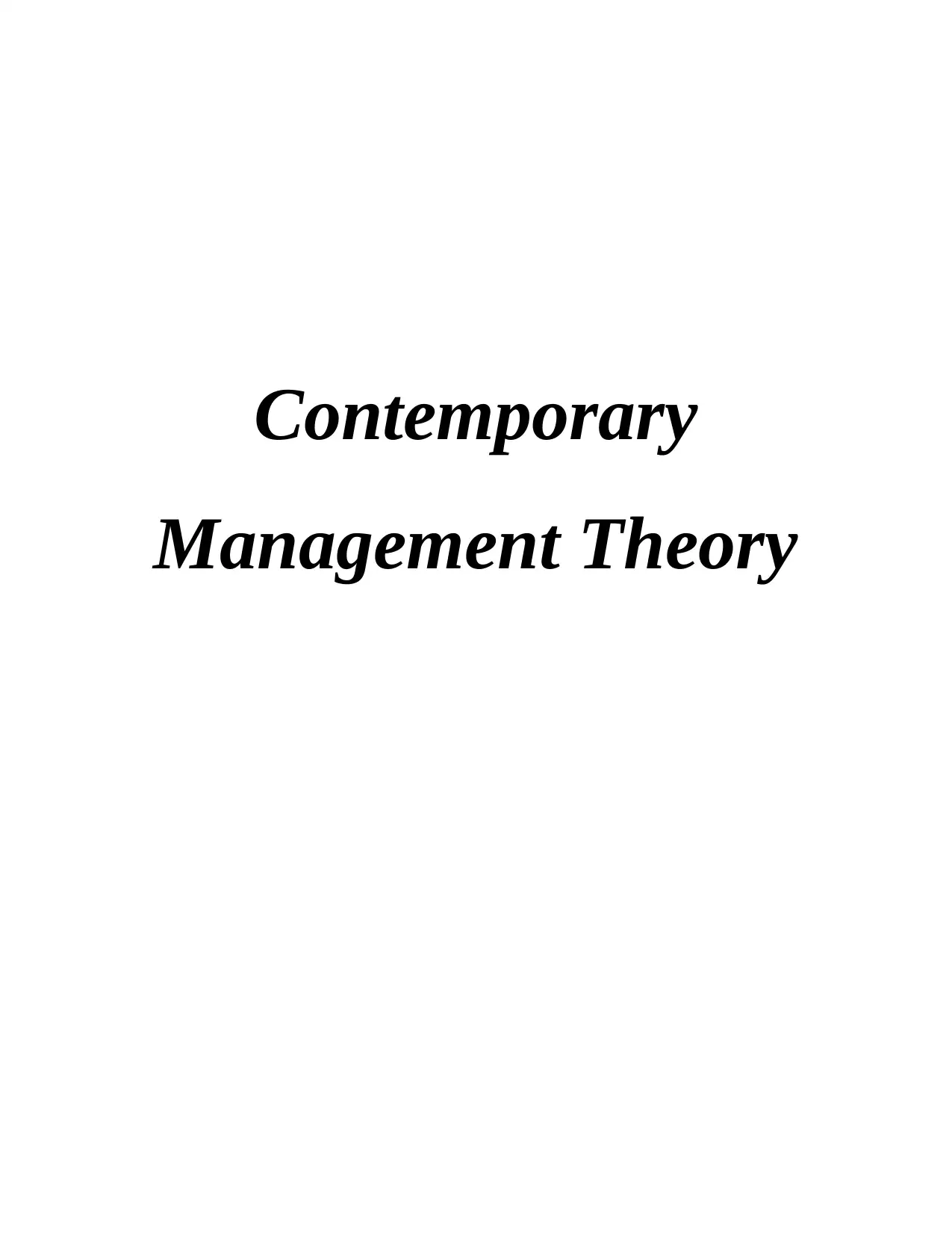
Contemporary
Management Theory
Management Theory
Paraphrase This Document
Need a fresh take? Get an instant paraphrase of this document with our AI Paraphraser
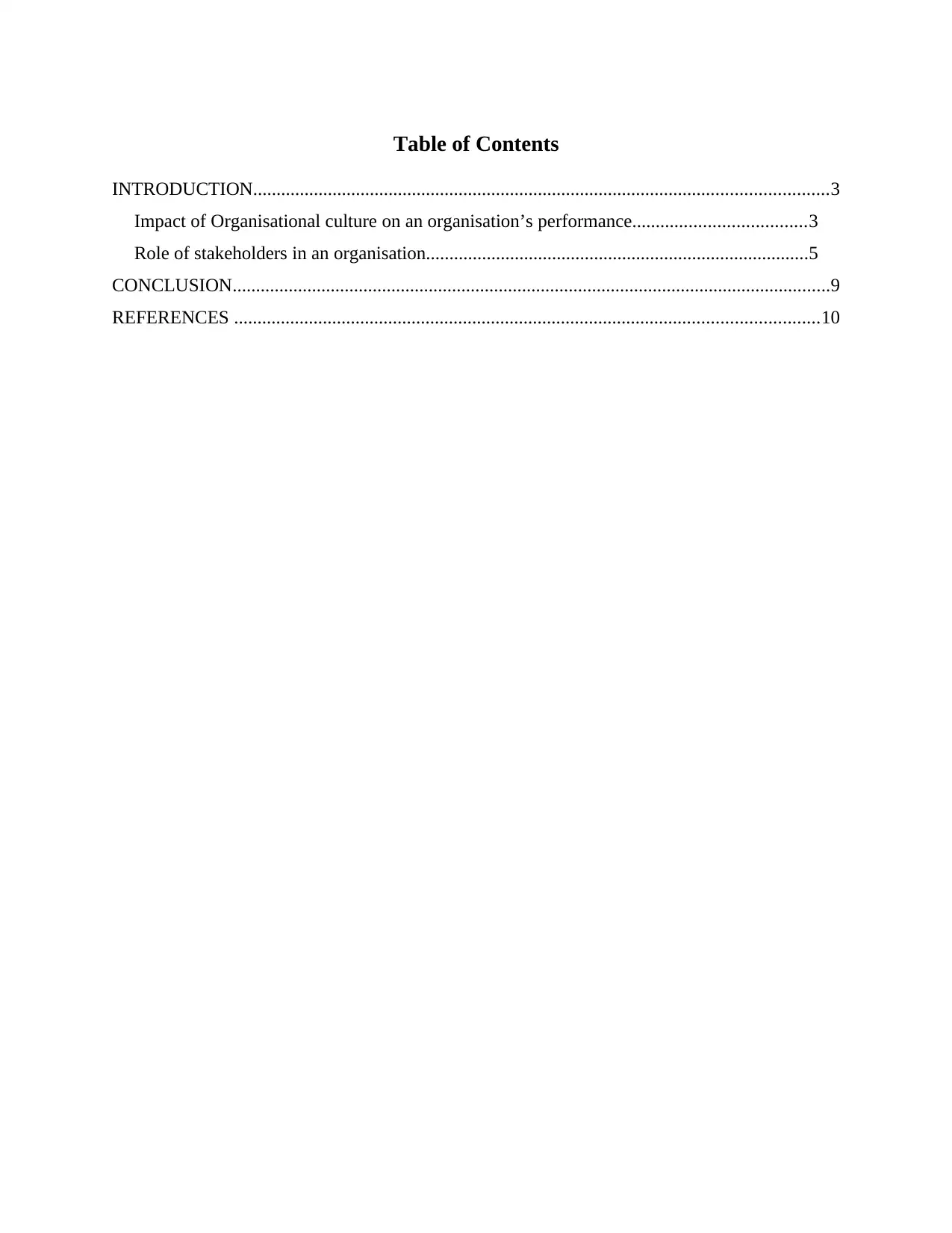
Table of Contents
INTRODUCTION...........................................................................................................................3
Impact of Organisational culture on an organisation’s performance.....................................3
Role of stakeholders in an organisation..................................................................................5
CONCLUSION................................................................................................................................9
REFERENCES .............................................................................................................................10
INTRODUCTION...........................................................................................................................3
Impact of Organisational culture on an organisation’s performance.....................................3
Role of stakeholders in an organisation..................................................................................5
CONCLUSION................................................................................................................................9
REFERENCES .............................................................................................................................10
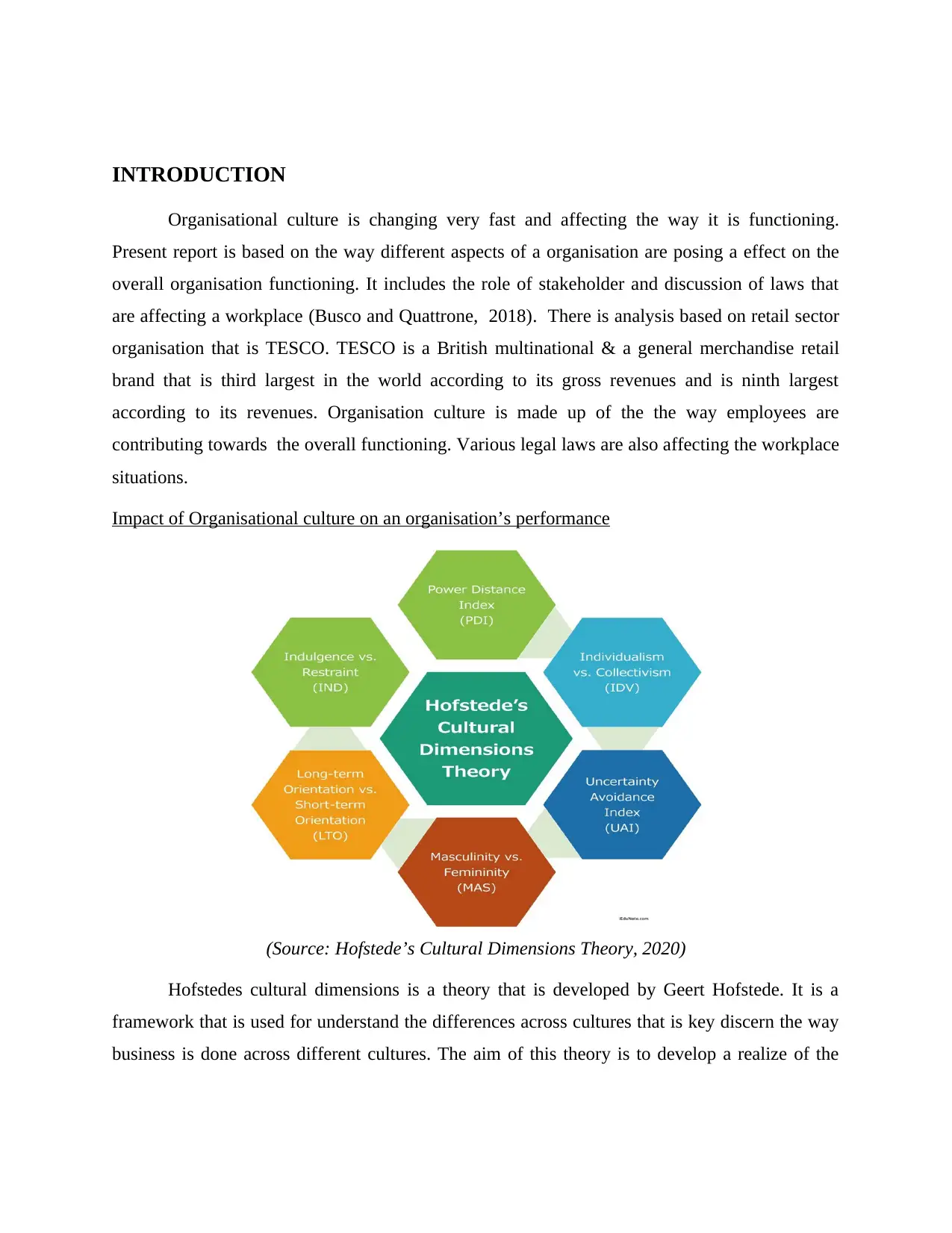
INTRODUCTION
Organisational culture is changing very fast and affecting the way it is functioning.
Present report is based on the way different aspects of a organisation are posing a effect on the
overall organisation functioning. It includes the role of stakeholder and discussion of laws that
are affecting a workplace (Busco and Quattrone, 2018). There is analysis based on retail sector
organisation that is TESCO. TESCO is a British multinational & a general merchandise retail
brand that is third largest in the world according to its gross revenues and is ninth largest
according to its revenues. Organisation culture is made up of the the way employees are
contributing towards the overall functioning. Various legal laws are also affecting the workplace
situations.
Impact of Organisational culture on an organisation’s performance
(Source: Hofstede’s Cultural Dimensions Theory, 2020)
Hofstedes cultural dimensions is a theory that is developed by Geert Hofstede. It is a
framework that is used for understand the differences across cultures that is key discern the way
business is done across different cultures. The aim of this theory is to develop a realize of the
Organisational culture is changing very fast and affecting the way it is functioning.
Present report is based on the way different aspects of a organisation are posing a effect on the
overall organisation functioning. It includes the role of stakeholder and discussion of laws that
are affecting a workplace (Busco and Quattrone, 2018). There is analysis based on retail sector
organisation that is TESCO. TESCO is a British multinational & a general merchandise retail
brand that is third largest in the world according to its gross revenues and is ninth largest
according to its revenues. Organisation culture is made up of the the way employees are
contributing towards the overall functioning. Various legal laws are also affecting the workplace
situations.
Impact of Organisational culture on an organisation’s performance
(Source: Hofstede’s Cultural Dimensions Theory, 2020)
Hofstedes cultural dimensions is a theory that is developed by Geert Hofstede. It is a
framework that is used for understand the differences across cultures that is key discern the way
business is done across different cultures. The aim of this theory is to develop a realize of the
⊘ This is a preview!⊘
Do you want full access?
Subscribe today to unlock all pages.

Trusted by 1+ million students worldwide
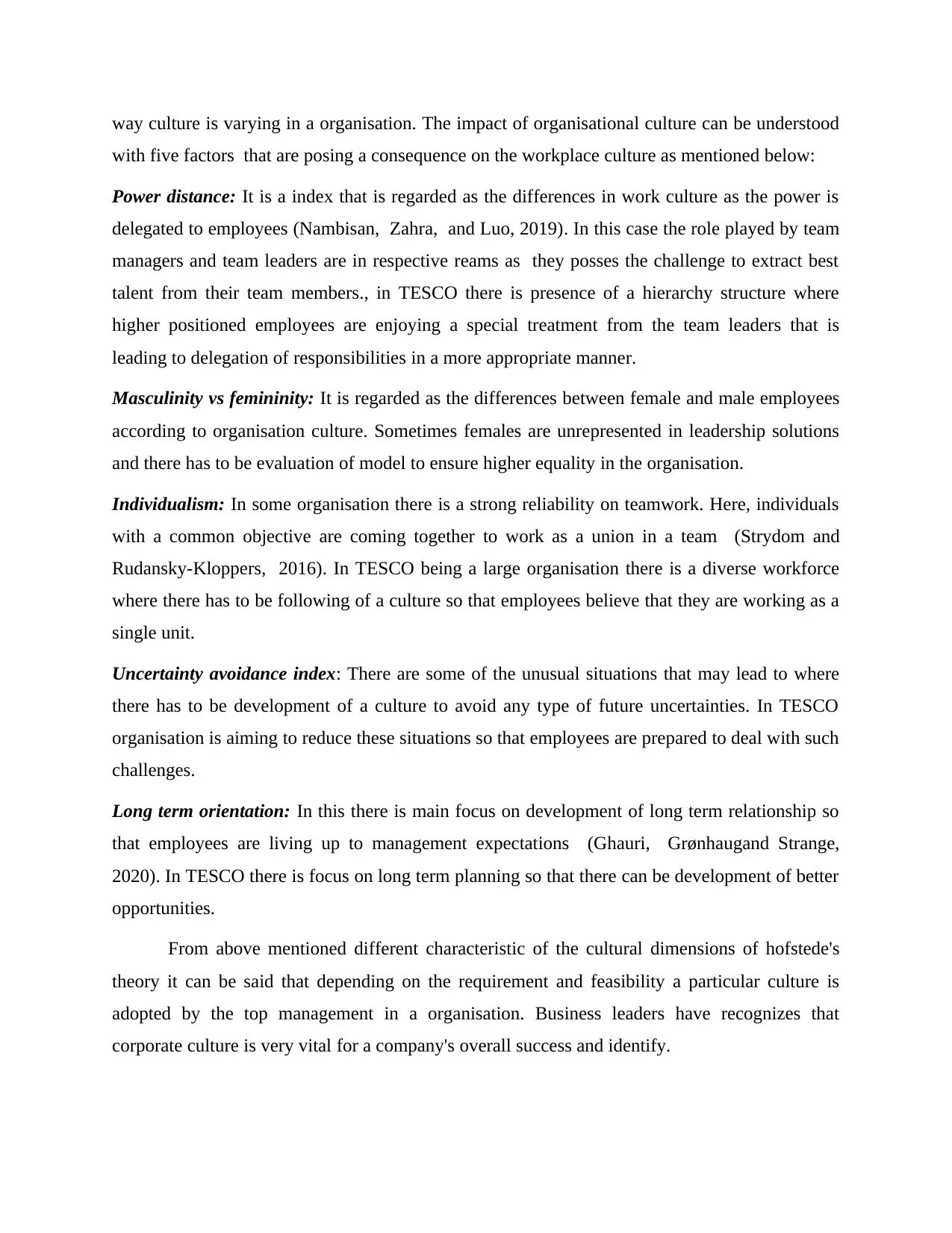
way culture is varying in a organisation. The impact of organisational culture can be understood
with five factors that are posing a consequence on the workplace culture as mentioned below:
Power distance: It is a index that is regarded as the differences in work culture as the power is
delegated to employees (Nambisan, Zahra, and Luo, 2019). In this case the role played by team
managers and team leaders are in respective reams as they posses the challenge to extract best
talent from their team members., in TESCO there is presence of a hierarchy structure where
higher positioned employees are enjoying a special treatment from the team leaders that is
leading to delegation of responsibilities in a more appropriate manner.
Masculinity vs femininity: It is regarded as the differences between female and male employees
according to organisation culture. Sometimes females are unrepresented in leadership solutions
and there has to be evaluation of model to ensure higher equality in the organisation.
Individualism: In some organisation there is a strong reliability on teamwork. Here, individuals
with a common objective are coming together to work as a union in a team (Strydom and
Rudansky-Kloppers, 2016). In TESCO being a large organisation there is a diverse workforce
where there has to be following of a culture so that employees believe that they are working as a
single unit.
Uncertainty avoidance index: There are some of the unusual situations that may lead to where
there has to be development of a culture to avoid any type of future uncertainties. In TESCO
organisation is aiming to reduce these situations so that employees are prepared to deal with such
challenges.
Long term orientation: In this there is main focus on development of long term relationship so
that employees are living up to management expectations (Ghauri, Grønhaugand Strange,
2020). In TESCO there is focus on long term planning so that there can be development of better
opportunities.
From above mentioned different characteristic of the cultural dimensions of hofstede's
theory it can be said that depending on the requirement and feasibility a particular culture is
adopted by the top management in a organisation. Business leaders have recognizes that
corporate culture is very vital for a company's overall success and identify.
with five factors that are posing a consequence on the workplace culture as mentioned below:
Power distance: It is a index that is regarded as the differences in work culture as the power is
delegated to employees (Nambisan, Zahra, and Luo, 2019). In this case the role played by team
managers and team leaders are in respective reams as they posses the challenge to extract best
talent from their team members., in TESCO there is presence of a hierarchy structure where
higher positioned employees are enjoying a special treatment from the team leaders that is
leading to delegation of responsibilities in a more appropriate manner.
Masculinity vs femininity: It is regarded as the differences between female and male employees
according to organisation culture. Sometimes females are unrepresented in leadership solutions
and there has to be evaluation of model to ensure higher equality in the organisation.
Individualism: In some organisation there is a strong reliability on teamwork. Here, individuals
with a common objective are coming together to work as a union in a team (Strydom and
Rudansky-Kloppers, 2016). In TESCO being a large organisation there is a diverse workforce
where there has to be following of a culture so that employees believe that they are working as a
single unit.
Uncertainty avoidance index: There are some of the unusual situations that may lead to where
there has to be development of a culture to avoid any type of future uncertainties. In TESCO
organisation is aiming to reduce these situations so that employees are prepared to deal with such
challenges.
Long term orientation: In this there is main focus on development of long term relationship so
that employees are living up to management expectations (Ghauri, Grønhaugand Strange,
2020). In TESCO there is focus on long term planning so that there can be development of better
opportunities.
From above mentioned different characteristic of the cultural dimensions of hofstede's
theory it can be said that depending on the requirement and feasibility a particular culture is
adopted by the top management in a organisation. Business leaders have recognizes that
corporate culture is very vital for a company's overall success and identify.
Paraphrase This Document
Need a fresh take? Get an instant paraphrase of this document with our AI Paraphraser
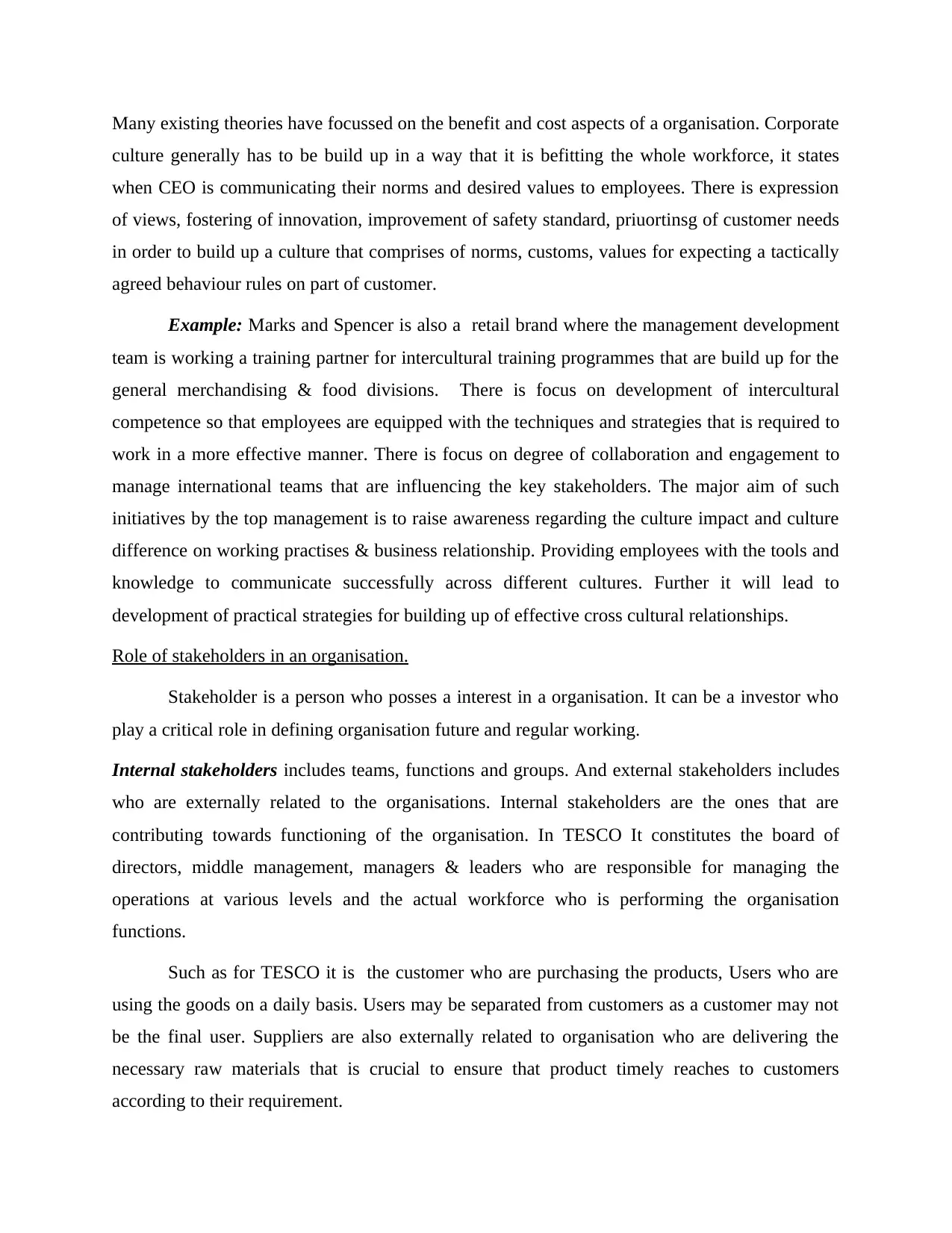
Many existing theories have focussed on the benefit and cost aspects of a organisation. Corporate
culture generally has to be build up in a way that it is befitting the whole workforce, it states
when CEO is communicating their norms and desired values to employees. There is expression
of views, fostering of innovation, improvement of safety standard, priuortinsg of customer needs
in order to build up a culture that comprises of norms, customs, values for expecting a tactically
agreed behaviour rules on part of customer.
Example: Marks and Spencer is also a retail brand where the management development
team is working a training partner for intercultural training programmes that are build up for the
general merchandising & food divisions. There is focus on development of intercultural
competence so that employees are equipped with the techniques and strategies that is required to
work in a more effective manner. There is focus on degree of collaboration and engagement to
manage international teams that are influencing the key stakeholders. The major aim of such
initiatives by the top management is to raise awareness regarding the culture impact and culture
difference on working practises & business relationship. Providing employees with the tools and
knowledge to communicate successfully across different cultures. Further it will lead to
development of practical strategies for building up of effective cross cultural relationships.
Role of stakeholders in an organisation.
Stakeholder is a person who posses a interest in a organisation. It can be a investor who
play a critical role in defining organisation future and regular working.
Internal stakeholders includes teams, functions and groups. And external stakeholders includes
who are externally related to the organisations. Internal stakeholders are the ones that are
contributing towards functioning of the organisation. In TESCO It constitutes the board of
directors, middle management, managers & leaders who are responsible for managing the
operations at various levels and the actual workforce who is performing the organisation
functions.
Such as for TESCO it is the customer who are purchasing the products, Users who are
using the goods on a daily basis. Users may be separated from customers as a customer may not
be the final user. Suppliers are also externally related to organisation who are delivering the
necessary raw materials that is crucial to ensure that product timely reaches to customers
according to their requirement.
culture generally has to be build up in a way that it is befitting the whole workforce, it states
when CEO is communicating their norms and desired values to employees. There is expression
of views, fostering of innovation, improvement of safety standard, priuortinsg of customer needs
in order to build up a culture that comprises of norms, customs, values for expecting a tactically
agreed behaviour rules on part of customer.
Example: Marks and Spencer is also a retail brand where the management development
team is working a training partner for intercultural training programmes that are build up for the
general merchandising & food divisions. There is focus on development of intercultural
competence so that employees are equipped with the techniques and strategies that is required to
work in a more effective manner. There is focus on degree of collaboration and engagement to
manage international teams that are influencing the key stakeholders. The major aim of such
initiatives by the top management is to raise awareness regarding the culture impact and culture
difference on working practises & business relationship. Providing employees with the tools and
knowledge to communicate successfully across different cultures. Further it will lead to
development of practical strategies for building up of effective cross cultural relationships.
Role of stakeholders in an organisation.
Stakeholder is a person who posses a interest in a organisation. It can be a investor who
play a critical role in defining organisation future and regular working.
Internal stakeholders includes teams, functions and groups. And external stakeholders includes
who are externally related to the organisations. Internal stakeholders are the ones that are
contributing towards functioning of the organisation. In TESCO It constitutes the board of
directors, middle management, managers & leaders who are responsible for managing the
operations at various levels and the actual workforce who is performing the organisation
functions.
Such as for TESCO it is the customer who are purchasing the products, Users who are
using the goods on a daily basis. Users may be separated from customers as a customer may not
be the final user. Suppliers are also externally related to organisation who are delivering the
necessary raw materials that is crucial to ensure that product timely reaches to customers
according to their requirement.
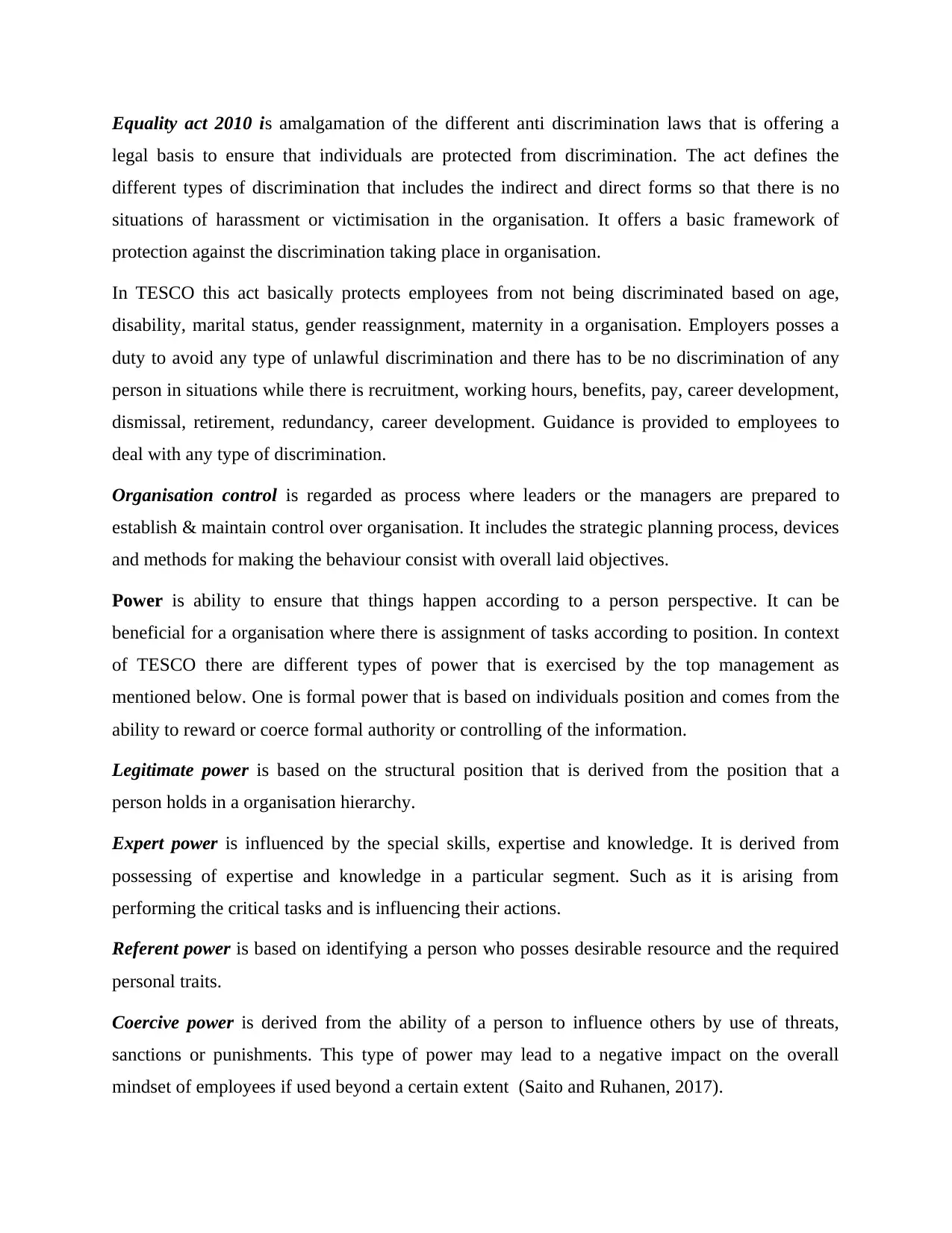
Equality act 2010 is amalgamation of the different anti discrimination laws that is offering a
legal basis to ensure that individuals are protected from discrimination. The act defines the
different types of discrimination that includes the indirect and direct forms so that there is no
situations of harassment or victimisation in the organisation. It offers a basic framework of
protection against the discrimination taking place in organisation.
In TESCO this act basically protects employees from not being discriminated based on age,
disability, marital status, gender reassignment, maternity in a organisation. Employers posses a
duty to avoid any type of unlawful discrimination and there has to be no discrimination of any
person in situations while there is recruitment, working hours, benefits, pay, career development,
dismissal, retirement, redundancy, career development. Guidance is provided to employees to
deal with any type of discrimination.
Organisation control is regarded as process where leaders or the managers are prepared to
establish & maintain control over organisation. It includes the strategic planning process, devices
and methods for making the behaviour consist with overall laid objectives.
Power is ability to ensure that things happen according to a person perspective. It can be
beneficial for a organisation where there is assignment of tasks according to position. In context
of TESCO there are different types of power that is exercised by the top management as
mentioned below. One is formal power that is based on individuals position and comes from the
ability to reward or coerce formal authority or controlling of the information.
Legitimate power is based on the structural position that is derived from the position that a
person holds in a organisation hierarchy.
Expert power is influenced by the special skills, expertise and knowledge. It is derived from
possessing of expertise and knowledge in a particular segment. Such as it is arising from
performing the critical tasks and is influencing their actions.
Referent power is based on identifying a person who posses desirable resource and the required
personal traits.
Coercive power is derived from the ability of a person to influence others by use of threats,
sanctions or punishments. This type of power may lead to a negative impact on the overall
mindset of employees if used beyond a certain extent (Saito and Ruhanen, 2017).
legal basis to ensure that individuals are protected from discrimination. The act defines the
different types of discrimination that includes the indirect and direct forms so that there is no
situations of harassment or victimisation in the organisation. It offers a basic framework of
protection against the discrimination taking place in organisation.
In TESCO this act basically protects employees from not being discriminated based on age,
disability, marital status, gender reassignment, maternity in a organisation. Employers posses a
duty to avoid any type of unlawful discrimination and there has to be no discrimination of any
person in situations while there is recruitment, working hours, benefits, pay, career development,
dismissal, retirement, redundancy, career development. Guidance is provided to employees to
deal with any type of discrimination.
Organisation control is regarded as process where leaders or the managers are prepared to
establish & maintain control over organisation. It includes the strategic planning process, devices
and methods for making the behaviour consist with overall laid objectives.
Power is ability to ensure that things happen according to a person perspective. It can be
beneficial for a organisation where there is assignment of tasks according to position. In context
of TESCO there are different types of power that is exercised by the top management as
mentioned below. One is formal power that is based on individuals position and comes from the
ability to reward or coerce formal authority or controlling of the information.
Legitimate power is based on the structural position that is derived from the position that a
person holds in a organisation hierarchy.
Expert power is influenced by the special skills, expertise and knowledge. It is derived from
possessing of expertise and knowledge in a particular segment. Such as it is arising from
performing the critical tasks and is influencing their actions.
Referent power is based on identifying a person who posses desirable resource and the required
personal traits.
Coercive power is derived from the ability of a person to influence others by use of threats,
sanctions or punishments. This type of power may lead to a negative impact on the overall
mindset of employees if used beyond a certain extent (Saito and Ruhanen, 2017).
⊘ This is a preview!⊘
Do you want full access?
Subscribe today to unlock all pages.

Trusted by 1+ million students worldwide
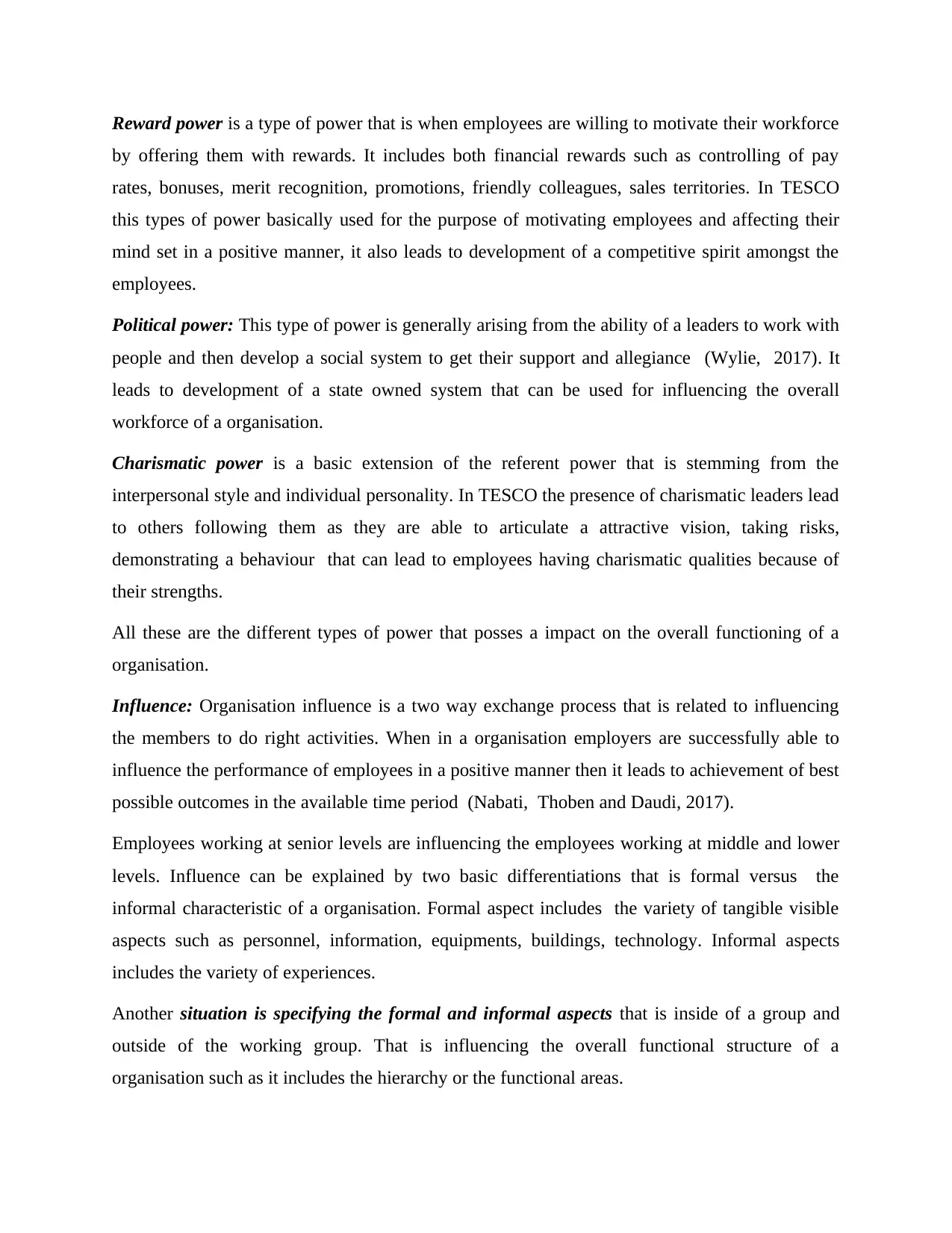
Reward power is a type of power that is when employees are willing to motivate their workforce
by offering them with rewards. It includes both financial rewards such as controlling of pay
rates, bonuses, merit recognition, promotions, friendly colleagues, sales territories. In TESCO
this types of power basically used for the purpose of motivating employees and affecting their
mind set in a positive manner, it also leads to development of a competitive spirit amongst the
employees.
Political power: This type of power is generally arising from the ability of a leaders to work with
people and then develop a social system to get their support and allegiance (Wylie, 2017). It
leads to development of a state owned system that can be used for influencing the overall
workforce of a organisation.
Charismatic power is a basic extension of the referent power that is stemming from the
interpersonal style and individual personality. In TESCO the presence of charismatic leaders lead
to others following them as they are able to articulate a attractive vision, taking risks,
demonstrating a behaviour that can lead to employees having charismatic qualities because of
their strengths.
All these are the different types of power that posses a impact on the overall functioning of a
organisation.
Influence: Organisation influence is a two way exchange process that is related to influencing
the members to do right activities. When in a organisation employers are successfully able to
influence the performance of employees in a positive manner then it leads to achievement of best
possible outcomes in the available time period (Nabati, Thoben and Daudi, 2017).
Employees working at senior levels are influencing the employees working at middle and lower
levels. Influence can be explained by two basic differentiations that is formal versus the
informal characteristic of a organisation. Formal aspect includes the variety of tangible visible
aspects such as personnel, information, equipments, buildings, technology. Informal aspects
includes the variety of experiences.
Another situation is specifying the formal and informal aspects that is inside of a group and
outside of the working group. That is influencing the overall functional structure of a
organisation such as it includes the hierarchy or the functional areas.
by offering them with rewards. It includes both financial rewards such as controlling of pay
rates, bonuses, merit recognition, promotions, friendly colleagues, sales territories. In TESCO
this types of power basically used for the purpose of motivating employees and affecting their
mind set in a positive manner, it also leads to development of a competitive spirit amongst the
employees.
Political power: This type of power is generally arising from the ability of a leaders to work with
people and then develop a social system to get their support and allegiance (Wylie, 2017). It
leads to development of a state owned system that can be used for influencing the overall
workforce of a organisation.
Charismatic power is a basic extension of the referent power that is stemming from the
interpersonal style and individual personality. In TESCO the presence of charismatic leaders lead
to others following them as they are able to articulate a attractive vision, taking risks,
demonstrating a behaviour that can lead to employees having charismatic qualities because of
their strengths.
All these are the different types of power that posses a impact on the overall functioning of a
organisation.
Influence: Organisation influence is a two way exchange process that is related to influencing
the members to do right activities. When in a organisation employers are successfully able to
influence the performance of employees in a positive manner then it leads to achievement of best
possible outcomes in the available time period (Nabati, Thoben and Daudi, 2017).
Employees working at senior levels are influencing the employees working at middle and lower
levels. Influence can be explained by two basic differentiations that is formal versus the
informal characteristic of a organisation. Formal aspect includes the variety of tangible visible
aspects such as personnel, information, equipments, buildings, technology. Informal aspects
includes the variety of experiences.
Another situation is specifying the formal and informal aspects that is inside of a group and
outside of the working group. That is influencing the overall functional structure of a
organisation such as it includes the hierarchy or the functional areas.
Paraphrase This Document
Need a fresh take? Get an instant paraphrase of this document with our AI Paraphraser
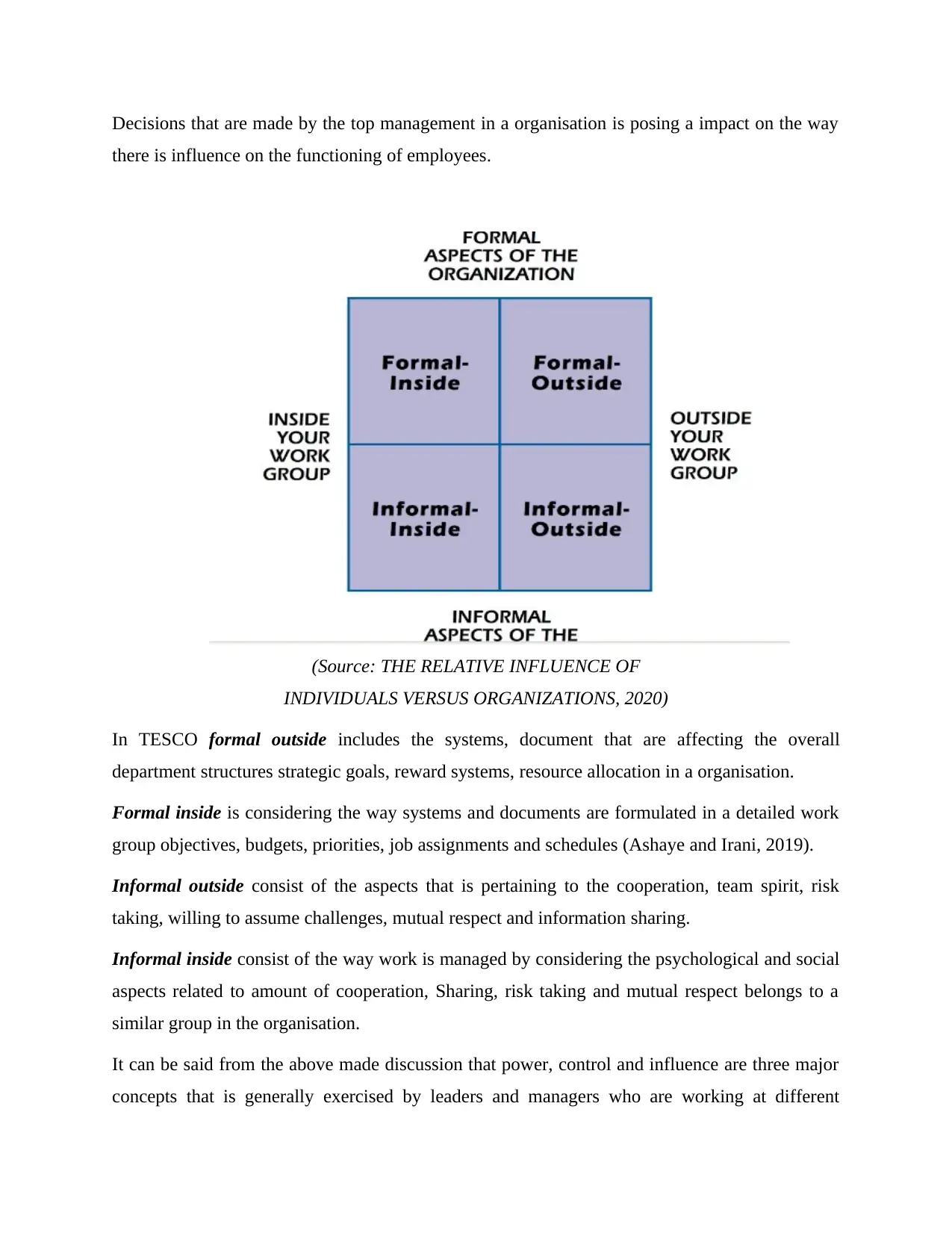
Decisions that are made by the top management in a organisation is posing a impact on the way
there is influence on the functioning of employees.
(Source: THE RELATIVE INFLUENCE OF
INDIVIDUALS VERSUS ORGANIZATIONS, 2020)
In TESCO formal outside includes the systems, document that are affecting the overall
department structures strategic goals, reward systems, resource allocation in a organisation.
Formal inside is considering the way systems and documents are formulated in a detailed work
group objectives, budgets, priorities, job assignments and schedules (Ashaye and Irani, 2019).
Informal outside consist of the aspects that is pertaining to the cooperation, team spirit, risk
taking, willing to assume challenges, mutual respect and information sharing.
Informal inside consist of the way work is managed by considering the psychological and social
aspects related to amount of cooperation, Sharing, risk taking and mutual respect belongs to a
similar group in the organisation.
It can be said from the above made discussion that power, control and influence are three major
concepts that is generally exercised by leaders and managers who are working at different
there is influence on the functioning of employees.
(Source: THE RELATIVE INFLUENCE OF
INDIVIDUALS VERSUS ORGANIZATIONS, 2020)
In TESCO formal outside includes the systems, document that are affecting the overall
department structures strategic goals, reward systems, resource allocation in a organisation.
Formal inside is considering the way systems and documents are formulated in a detailed work
group objectives, budgets, priorities, job assignments and schedules (Ashaye and Irani, 2019).
Informal outside consist of the aspects that is pertaining to the cooperation, team spirit, risk
taking, willing to assume challenges, mutual respect and information sharing.
Informal inside consist of the way work is managed by considering the psychological and social
aspects related to amount of cooperation, Sharing, risk taking and mutual respect belongs to a
similar group in the organisation.
It can be said from the above made discussion that power, control and influence are three major
concepts that is generally exercised by leaders and managers who are working at different
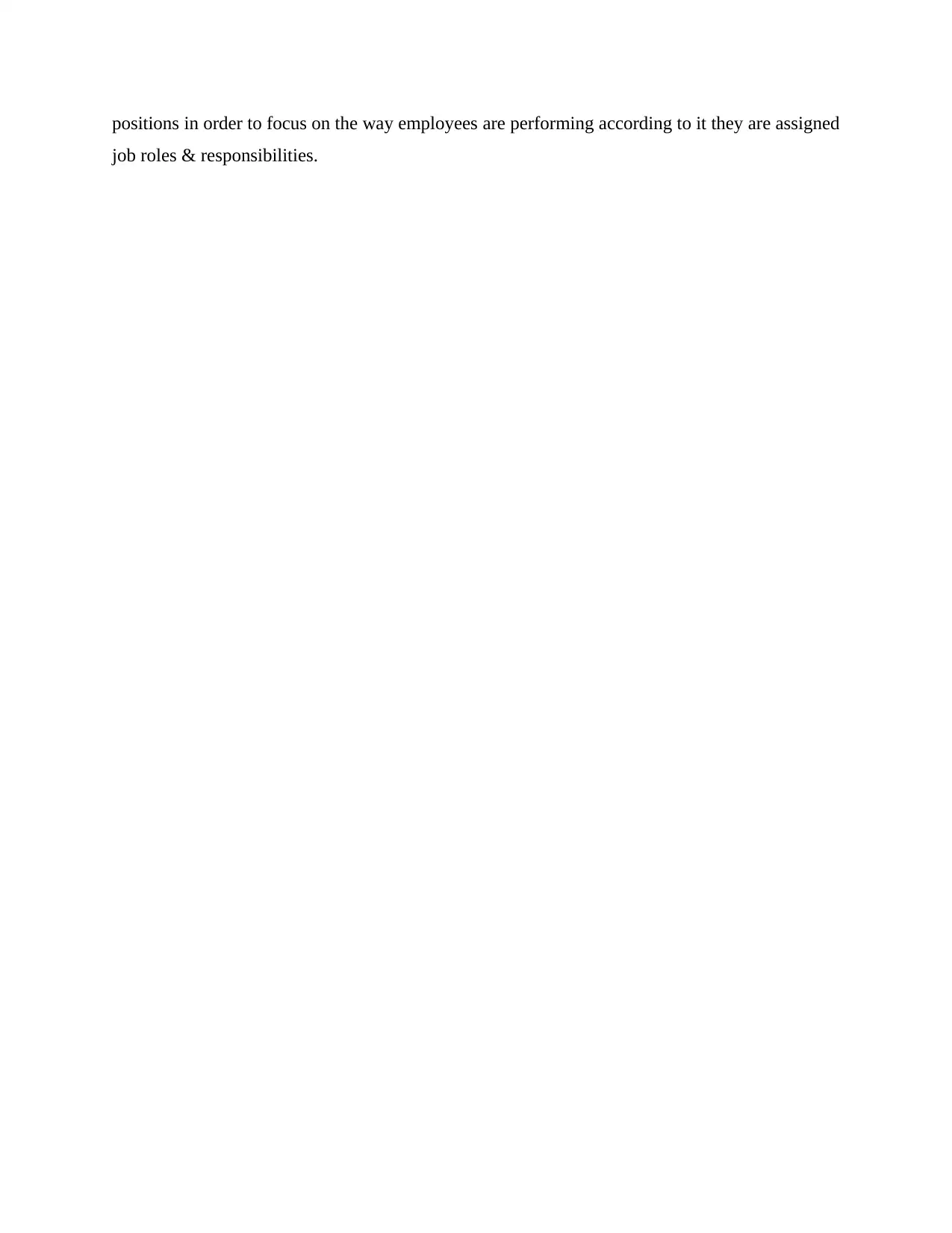
positions in order to focus on the way employees are performing according to it they are assigned
job roles & responsibilities.
job roles & responsibilities.
⊘ This is a preview!⊘
Do you want full access?
Subscribe today to unlock all pages.

Trusted by 1+ million students worldwide
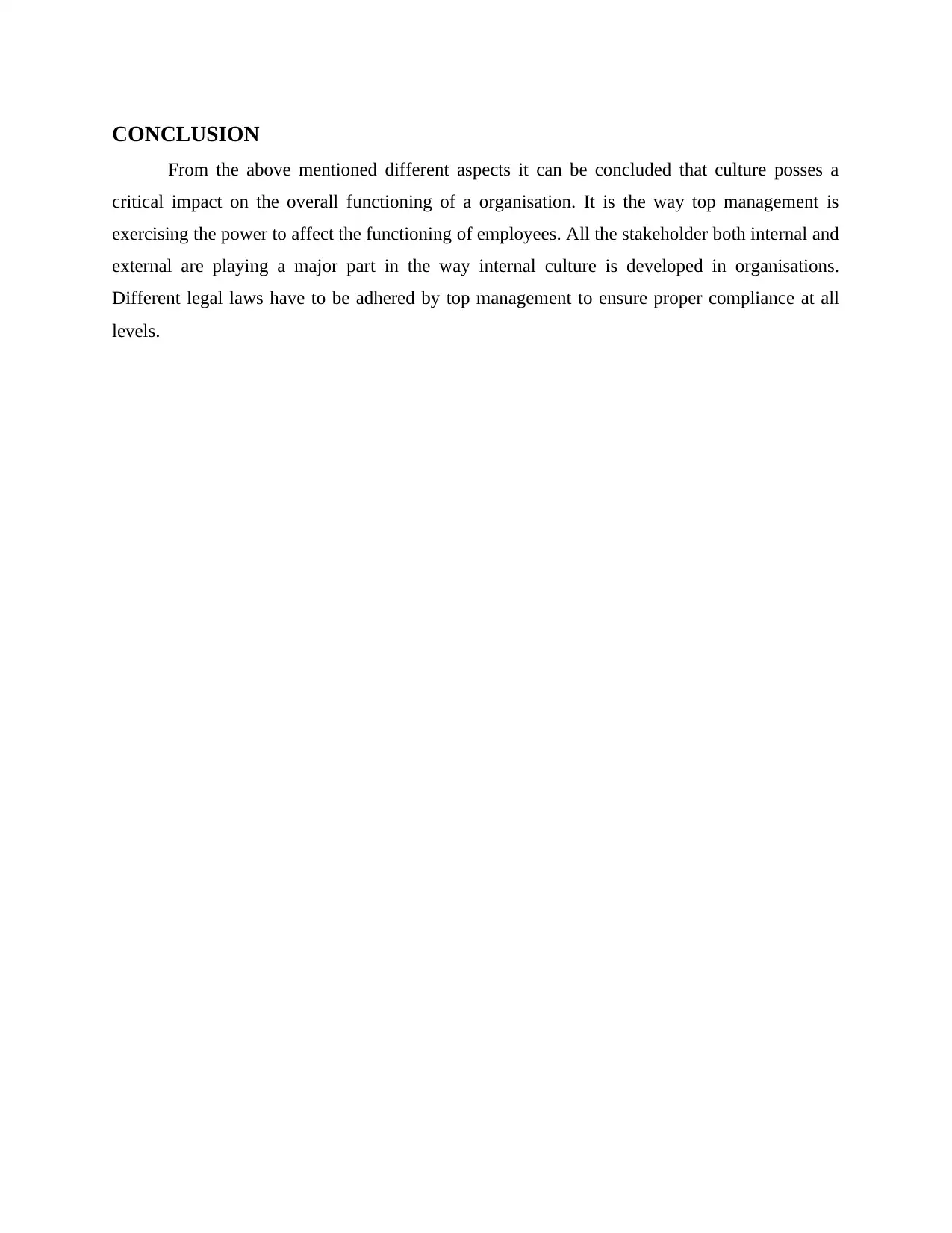
CONCLUSION
From the above mentioned different aspects it can be concluded that culture posses a
critical impact on the overall functioning of a organisation. It is the way top management is
exercising the power to affect the functioning of employees. All the stakeholder both internal and
external are playing a major part in the way internal culture is developed in organisations.
Different legal laws have to be adhered by top management to ensure proper compliance at all
levels.
From the above mentioned different aspects it can be concluded that culture posses a
critical impact on the overall functioning of a organisation. It is the way top management is
exercising the power to affect the functioning of employees. All the stakeholder both internal and
external are playing a major part in the way internal culture is developed in organisations.
Different legal laws have to be adhered by top management to ensure proper compliance at all
levels.
Paraphrase This Document
Need a fresh take? Get an instant paraphrase of this document with our AI Paraphraser
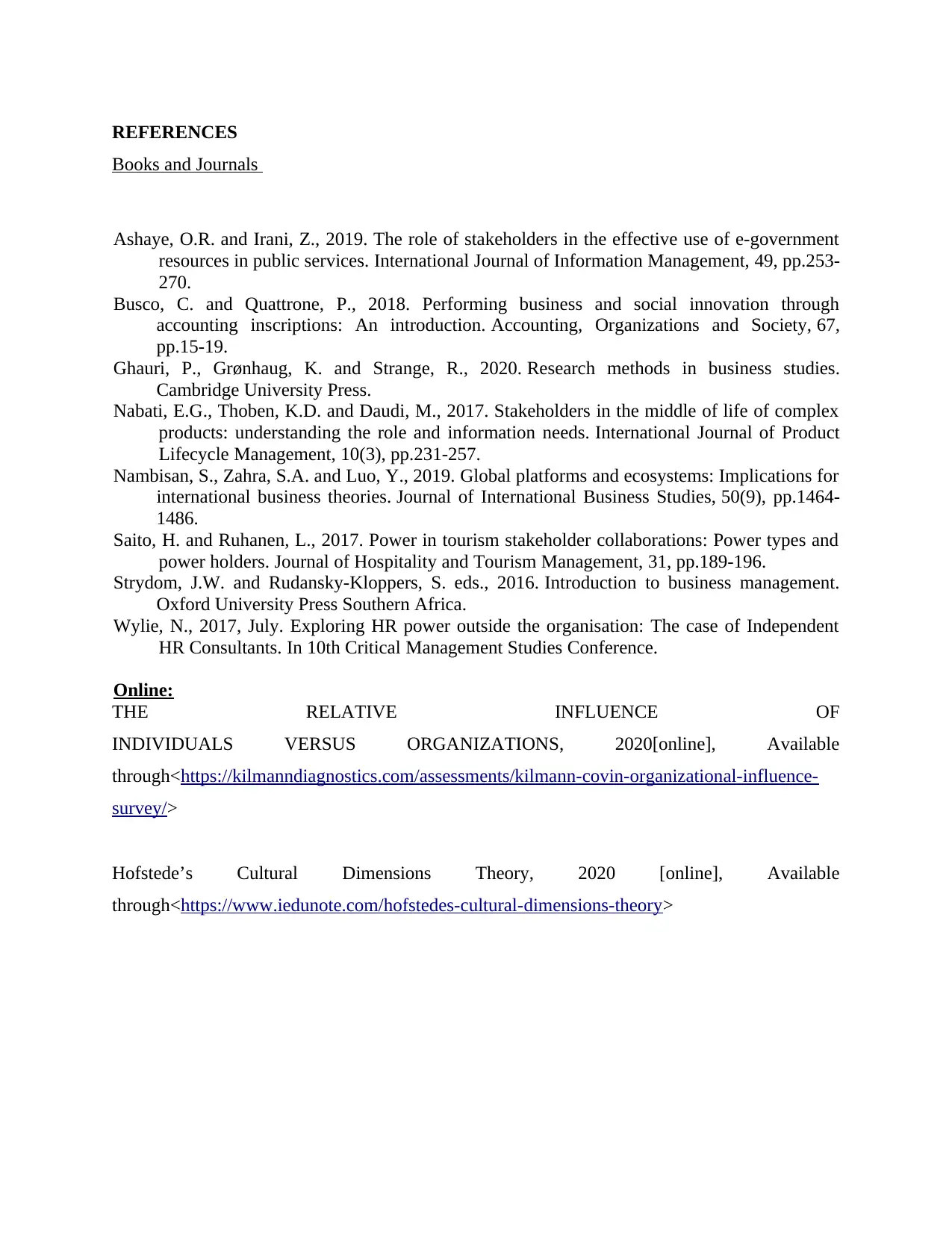
REFERENCES
Books and Journals
Ashaye, O.R. and Irani, Z., 2019. The role of stakeholders in the effective use of e-government
resources in public services. International Journal of Information Management, 49, pp.253-
270.
Busco, C. and Quattrone, P., 2018. Performing business and social innovation through
accounting inscriptions: An introduction. Accounting, Organizations and Society, 67,
pp.15-19.
Ghauri, P., Grønhaug, K. and Strange, R., 2020. Research methods in business studies.
Cambridge University Press.
Nabati, E.G., Thoben, K.D. and Daudi, M., 2017. Stakeholders in the middle of life of complex
products: understanding the role and information needs. International Journal of Product
Lifecycle Management, 10(3), pp.231-257.
Nambisan, S., Zahra, S.A. and Luo, Y., 2019. Global platforms and ecosystems: Implications for
international business theories. Journal of International Business Studies, 50(9), pp.1464-
1486.
Saito, H. and Ruhanen, L., 2017. Power in tourism stakeholder collaborations: Power types and
power holders. Journal of Hospitality and Tourism Management, 31, pp.189-196.
Strydom, J.W. and Rudansky-Kloppers, S. eds., 2016. Introduction to business management.
Oxford University Press Southern Africa.
Wylie, N., 2017, July. Exploring HR power outside the organisation: The case of Independent
HR Consultants. In 10th Critical Management Studies Conference.
Online:
THE RELATIVE INFLUENCE OF
INDIVIDUALS VERSUS ORGANIZATIONS, 2020[online], Available
through<https://kilmanndiagnostics.com/assessments/kilmann-covin-organizational-influence-
survey/>
Hofstede’s Cultural Dimensions Theory, 2020 [online], Available
through<https://www.iedunote.com/hofstedes-cultural-dimensions-theory>
Books and Journals
Ashaye, O.R. and Irani, Z., 2019. The role of stakeholders in the effective use of e-government
resources in public services. International Journal of Information Management, 49, pp.253-
270.
Busco, C. and Quattrone, P., 2018. Performing business and social innovation through
accounting inscriptions: An introduction. Accounting, Organizations and Society, 67,
pp.15-19.
Ghauri, P., Grønhaug, K. and Strange, R., 2020. Research methods in business studies.
Cambridge University Press.
Nabati, E.G., Thoben, K.D. and Daudi, M., 2017. Stakeholders in the middle of life of complex
products: understanding the role and information needs. International Journal of Product
Lifecycle Management, 10(3), pp.231-257.
Nambisan, S., Zahra, S.A. and Luo, Y., 2019. Global platforms and ecosystems: Implications for
international business theories. Journal of International Business Studies, 50(9), pp.1464-
1486.
Saito, H. and Ruhanen, L., 2017. Power in tourism stakeholder collaborations: Power types and
power holders. Journal of Hospitality and Tourism Management, 31, pp.189-196.
Strydom, J.W. and Rudansky-Kloppers, S. eds., 2016. Introduction to business management.
Oxford University Press Southern Africa.
Wylie, N., 2017, July. Exploring HR power outside the organisation: The case of Independent
HR Consultants. In 10th Critical Management Studies Conference.
Online:
THE RELATIVE INFLUENCE OF
INDIVIDUALS VERSUS ORGANIZATIONS, 2020[online], Available
through<https://kilmanndiagnostics.com/assessments/kilmann-covin-organizational-influence-
survey/>
Hofstede’s Cultural Dimensions Theory, 2020 [online], Available
through<https://www.iedunote.com/hofstedes-cultural-dimensions-theory>
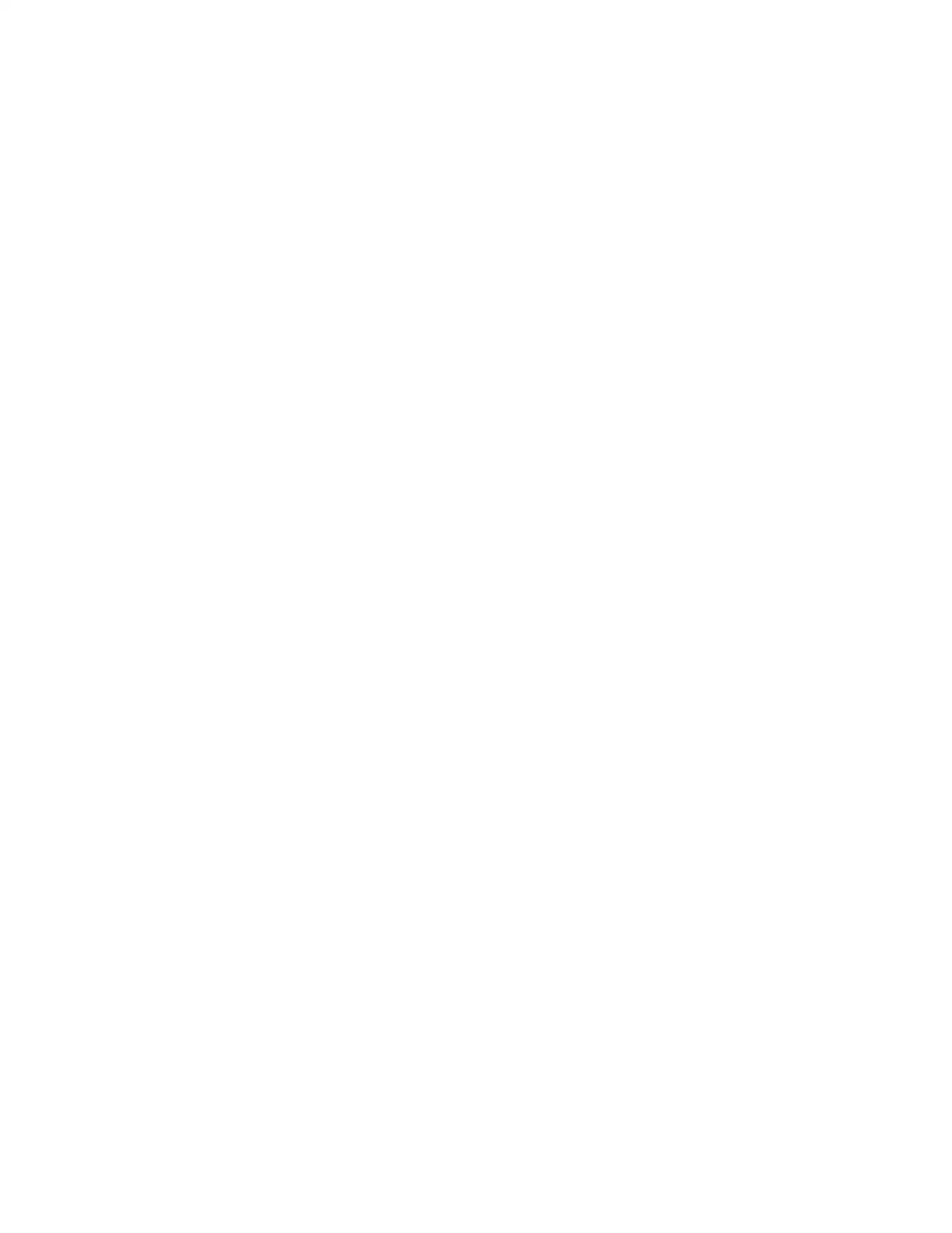
⊘ This is a preview!⊘
Do you want full access?
Subscribe today to unlock all pages.

Trusted by 1+ million students worldwide
1 out of 16
Related Documents
Your All-in-One AI-Powered Toolkit for Academic Success.
+13062052269
info@desklib.com
Available 24*7 on WhatsApp / Email
![[object Object]](/_next/static/media/star-bottom.7253800d.svg)
Unlock your academic potential
Copyright © 2020–2025 A2Z Services. All Rights Reserved. Developed and managed by ZUCOL.





